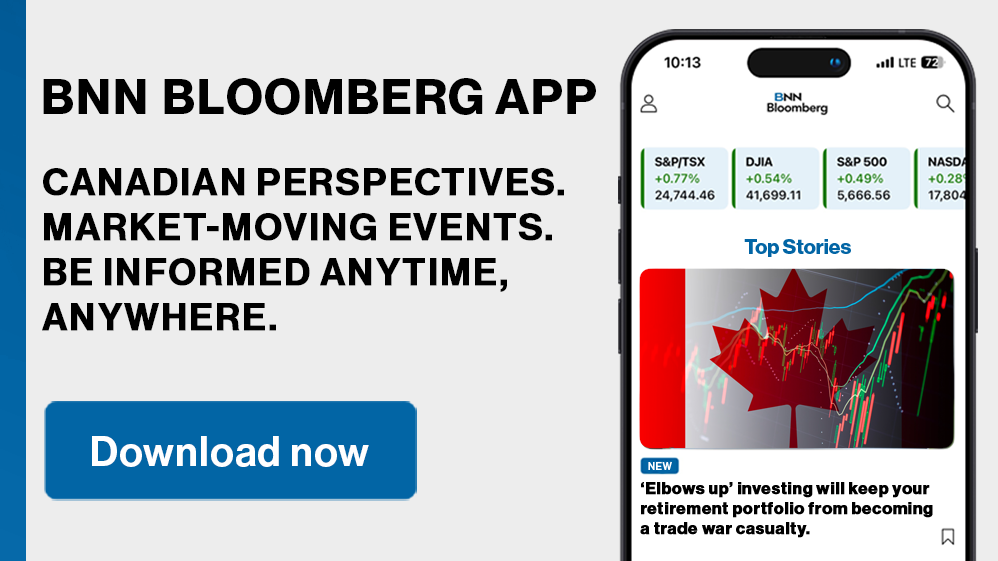Describing April 2 as “Liberation Day” when he’ll unleash “the big one,” U.S. President Donald Trump seems intent on reshaping the U.S.’s major trading partnerships with a toolbox of reciprocal tariffs.
As the deadline approaches, it’s still not clear how far he’ll go in overturning the current rules-based system of global commerce. The uncertainty has shaken financial markets, prompted economists to cut their U.S. growth forecasts and forced central bankers to factor in the potential inflationary impact of higher import costs.
There are signs that Trump may not carry out all his threats — or at least not all at once. Under one scenario telegraphed by White House officials, he might instead launch investigations to seek a legal basis for some of the tariffs several months down the road, in addition to levies he’ll impose immediately by emergency order.
What are reciprocal tariffs?
The term “reciprocal,” when used in the context of trade, usually refers to measures taken by both parties to ensure fairness in bilateral commerce. For much of the past 90 years, that typically meant lowering trade barriers. In the U.S., the Reciprocal Trade Agreements Act of 1934 marked the end of an era of American protectionism and allowed the U.S. and partner countries to negotiate lower tariffs on each others’ goods.
For Trump, the concept of “reciprocal trade” appeared in online campaign materials from 2023, when they were described as an “eye-for-an-eye” approach to fix trade imbalances by raising U.S. tariffs.
Trump and his advisers argue that the practices of many American trading partners put their own exporters at a competitive advantage over U.S. businesses, to the detriment of American manufacturing. Building a tariff wall around the U.S. economy would incentivize foreign producers — or U.S. companies operating abroad — to build facilities in the U.S. and hire American workers, reversing a hollowing-out of the country’s middle class, they say. The strategy has another, more recently stated goal: generating revenue to help pay for tax cuts.
How would reciprocal tariffs work?
New import taxes are to be customized for each US trading partner, according to a copy of a memo distributed by the White House. The goal is to offset not just a trading partner’s own tariffs on U.S. goods but also other factors deemed to put American manufacturers at a disadvantage, such as subsidies to businesses that are seen as unfair, regulations such as rules protecting personal data, value-added taxes (VATs), managed exchange rates, and lax intellectual property protections.
These so-called “non-tariff barriers” are hard to quantify, creating an enormous challenge for the Office of the U.S. Trade Representative and the U.S. Commerce Department, which are tasked with proposing the new levies on a country-by-country basis.
U.S. Commerce Secretary Howard Lutnick recently likened his task to preparing to renegotiate trade deals with dozens of countries, a process that can take years for just one bilateral agreement to be reached.

Reciprocal tariffs could be imposed in a number of ways: They could be applied to specific products, to entire industries or as an average tariff on goods arriving from a specific country. Treasury Secretary Scott Bessent recently signaled it’s likely to be the latter, saying there were about 15 countries under the microscope and that each “will receive a number that we believe that represents their tariffs.”
Theoretically, the U.S. could lower tariffs in some cases, for purposes of reciprocity. Some countries could be given exemptions or tariff reductions, Trump said in the days before the tariffs were due to take effect, though he later added that he didn’t want to grant “too many” exclusions.
How do reciprocal tariffs differ from Trump’s original plan of universal tariffs?
During his election campaign, Trump threatened to impose a universal tariff of 20 per cent on imports from all countries except China. Originally, he threated tariffs of 60 per cent on imports from China but has since imposed levies of 20 per cent on the country.
A reciprocal policy would be more tailored to the specifics of each trading relationship. It implies that some countries — particularly those with few barriers for U.S. companies — may be largely exempt.
Which countries stand to lose out?
If the U.S. matches the specific levies placed by countries with the highest tariffs on U.S. goods, emerging market nations would be hit hardest. India, Argentina and much of Africa and Southeast Asia would be most exposed, according to Bloomberg Economics, which compared tariff rates between the U.S. and its trading partners.
But much of the world could be affected, given that the Trump administration is looking at a more general definition of trade “fairness.” The U.S. has an overall trade deficit, meaning it imports more from other countries than they import from the U.S., and Trump sees this imbalance as fundamentally unfair.
He has repeatedly lamented value-added taxes on U.S.-made goods sold in other countries, particularly the European Union’s minimum 15 per cent VAT. Japan also has a VAT, known as a consumption tax.
According to a Federal Register filing by USTR, the Trump administration is “particularly interested in” trading partners with the largest trade surpluses with the U.S. The filing lists 21 economies that account for 88 per cent of all U.S. goods trade.
They are: Argentina, Australia, Brazil, Canada, China, the EU, India, Indonesia, Japan, Korea, Malaysia, Mexico, Russia, Saudi Arabia, South Africa, Switzerland, Taiwan, Thailand, Turkey, the U.K. and Vietnam.
Is there room for negotiation?
Precedent suggests that Trump likes to shock first, negotiate second. During his first term as president, he provided tariff exemptions to some nations and on some imports after lobbying by domestic industries that would have been affected by the levies.
China avoided an additional round of tariffs in 2019 after promising to purchase billions more in key U.S. goods including agricultural commodities. In early February, Trump delayed the imposition of 25 per cent tariffs on imports from Mexico and Canada after the two U.S. neighbours agreed to take tougher measures to combat migration and drug trafficking at the border.
Still, there are signs that Trump will be tougher on trade during his second term. A case in point: He initially signaled that Australia may be exempt from steel and aluminum tariffs he plans to levy on all nations. Later, his trade adviser threw cold water on that by saying Australian aluminum was “killing” the U.S. industry.
Are reciprocal tariffs fair?
It depends on whether your definition of “fair” is flexible enough to account for countries at various stages of economic development.
Emerging markets tend to place higher tariffs on imports of certain goods to protect jobs and domestic industries — chief among them agriculture — until they reach some level of competitiveness globally.
With assistance from James Mayger.
Brendan Murray and Katia Dmitrieva, Bloomberg News
---
U.S. President Donald Trump’s reciprocal tariffs on trading partners are set to take effect on April 2, a day he has proclaimed as “Liberation Day” for American trade. CTV News will have extensive coverage across all platforms:
- CTVNews.ca will have in-depth coverage, real-time updates, and expert analysis on what the tariffs will mean for Canadians.
- CP24.com will report on any developments out of Queen’s Park and what the tariffs means for the people of the GTHA.
- BNNBloomberg.ca will explain what this means for the business community, investors, and the market.
©2025 Bloomberg L.P.












